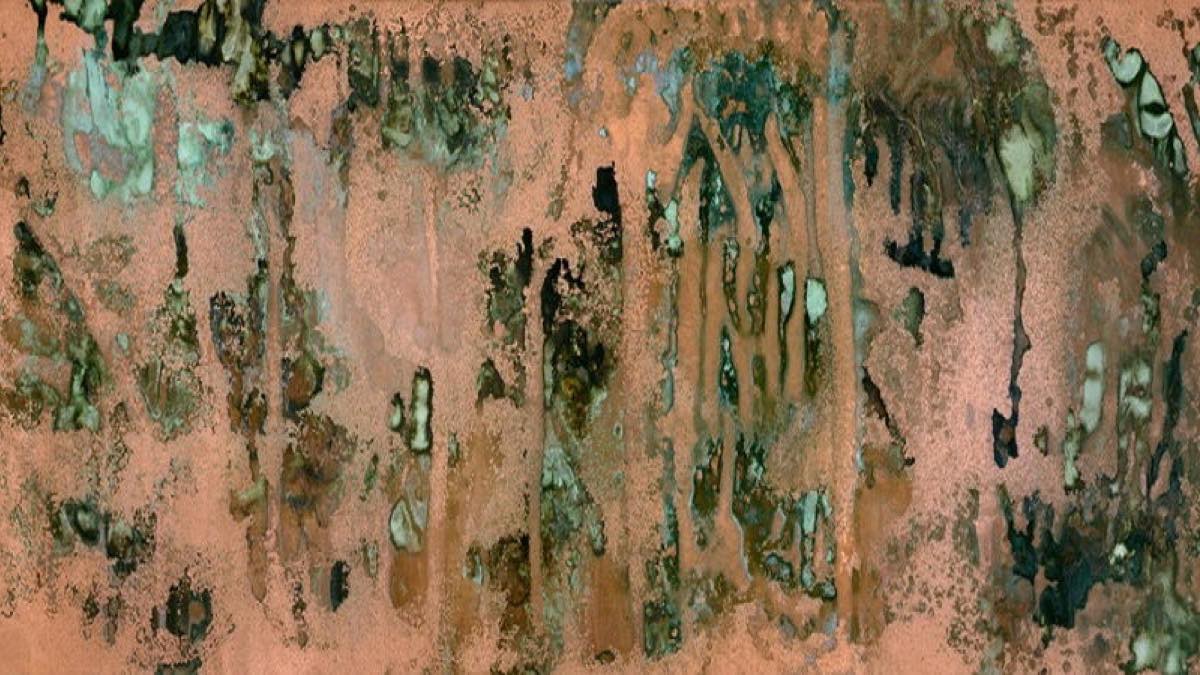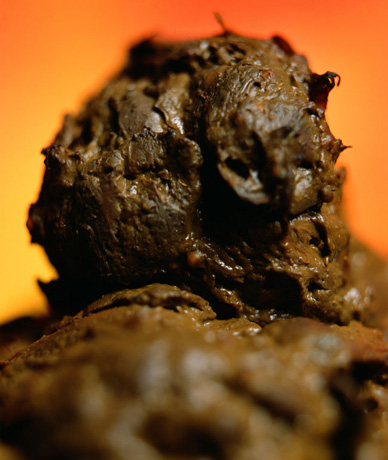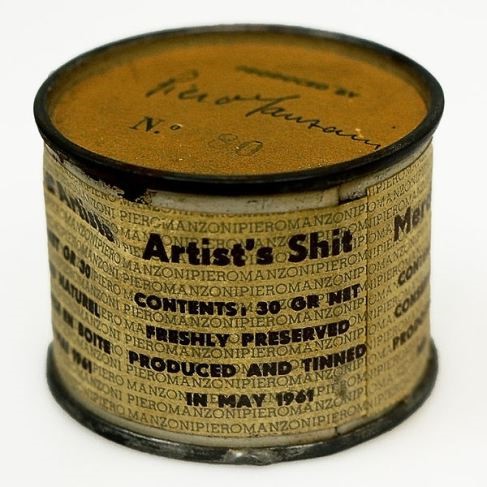
Body Fluids in Art: Artworks that disgust us
Nowadays, many among us shrug their shoulders when they hear about contemporary art. They are quick to associate it with provocative artworks making big headlines every now and then, such as, in 1987, the photograph Piss Christ by Andres Serano representing a crucifix emerged in a glass of the artist’s urine.
This type of work shocks and disgusts us from a moral standpoint, but also on a more primal physical level. Not only are they often blasphemous, but it’s also hard not to have an instinctive feeling of disgust in front of a piece that we know is made of the artist’s urine.

Self, blood (artist’s), stainless steel, perspex and refrigeration © Marc Quinn, 1991- ongoing
In modern and contemporary art history, long is the list of artworks made out of unappealing body fluids: The Holy Virgin Mary by Chris Ofili made of elephant feces, Shit (Self Portrait) by Andres Serrano, Artist’s shit by Piero Manzoni –which titles are rather self-explanatory-, Self by Marc Quinn, a portrait sculpture made out of the artist’s blood, or Andy Warhol‘series Oxidation for which he asked his friends to urinate on canvases covered with metallic copper pigments.
Those artworks take part in several artistic dynamics: on one hand, the increasing use of untraditional artistic media over the 20th century. This new reality went hand in hand with a wider scope of artistic practices. Artistic experimentation kept pushing the boundaries of fine art further, until the explosion of techniques that we see nowadays. Since we can make art with almost anything today, why not make it out of body secretions after all?

Shit (Self Portrait) © Andres Serrano, 2008
It is within this context that the use of body fluids in art, which fall within the art movement called “abject art”, has to be understood. The concept of “abject art” was coined in the 90’s by the psychoanalyst Julia Kristeva in Powers of Horror: an essay on abjection. Abjection art is defined as the basis of a fundamental differentiation between the self and non-self, as a reaction to the confrontation with the “abject”, triggered by disgust or phobia.
Abject art therefore uses “abject media” such as blood, dirt, feces, and all substances considered abject that produce immediate reaction of disgust. The medium as well as the subject matter of the work are generally thought to be inappropriate and make the spectator feel profoundly uncomfortable.

Artist’s Shit © Piero Manzoni, 1961
Abject art, and those artworks made out of repelling organic fluids, pushes to the extreme the proclaimed mission of art to disturb viewers and have them see the world around with new eyes. Here, viewers are attacked by the artwork at a psychological level they might not even be conscious of, since, according to Julia Kristeva, the feeling induced by abjection, is an existentialist crisis of oneself when one realizes he is a subject in the world. Inspired by Jacques Lacan psychoanalytic works, she differentiates subject and object. Each individual feels he is inherent to himself both physical and psychologically. Abjection refers to the blurring of limits between oneself and others, subject and object. Abjection is the characteristic of what is the most utterly contradictory to oneself as a subject.
Hence, artworks made out of body fluids such as blood, urine or feces, repulse and discomfort us in our most primal relation to the world. Behind the making of those disturbing artworks, lies something more than a shallow desire to shock spectators and create controversy: those artists seek to push further the boundaries of human psychology. After all, it’s indeed the purpose of art to throw us out of our mental comfort zone.

About Artsper
Founded in 2013, Artsper is an online marketplace for contemporary art. Partnering with 1,800 professional art galleries around the world, it makes discovering and acquiring art accessible to all.
Learn more













